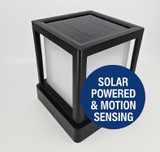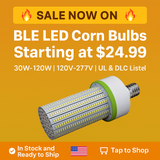Ballast vs. Power Supply: What’s the Difference and Why It Matters
If you've ever shopped for commercial or industrial lighting—or considered upgrading to LEDs—you’ve probably come across the terms ballast and power supply. While they might seem similar, they actually serve different purposes depending on the type of lighting you're working with.
So what’s the real difference? Let’s break it down.
What Is a Ballast?
A ballast is used in fluorescent, HID (High-Intensity Discharge), and induction lighting systems. Its main job is to:
*Regulate electrical current to the lamp
*Provide the right voltage to start and run the light
*Prevent overheating or burnout
Without a ballast, a lamp could draw too much power when starting up, which would shorten its lifespan—or worse, cause it to fail immediately.
Types of Ballasts:
*Magnetic Ballasts: Older tech, bulkier, can buzz or hum, and are less energy-efficient
*Electronic Ballasts: More efficient and quieter
*Induction Ballasts: Used in induction lighting systems (a long-life, low-maintenance solution for specialty applications)
What Is a Power Supply (LED Driver)?
A power supply—commonly called an LED driver—is essential for powering modern LED lighting systems. It’s designed to:
*Convert AC (Alternating Current) into DC (Direct Current), which is what LEDs need
*Regulate output voltage and current to keep LEDs running safely and efficiently
There are two common types:
*Constant Voltage Drivers: Deliver a fixed voltage—often used with LED tape lights and strips
*Constant Current Drivers: Like a LED constant current driver, these deliver a fixed current and are commonly used with commercial-grade LED fixtures to ensure optimal performance and longevity
When choosing a driver for your LED fixture, make sure the specs match. For example, a 42W LED driver would be perfect for fixtures requiring up to 42 watts of output at a consistent current level.
Many modern LED drivers also support dimming, making them ideal for energy-conscious or lighting control applications.
Ballast vs. Power Supply: A Side-by-Side Comparison

Why This Matters for Lighting Upgrades
If you're upgrading an older lighting system or retrofitting to LED, it's important to understand what components are needed:
*Legacy systems use ballasts, including induction ballasts for certain applications
*Modern LED systems require a properly matched LED driver, such as a 42W LED constant current driver
*Retrofitting may require removing or bypassing the ballast and replacing it with a suitable LED driver
✅ Final Thoughts
Understanding the difference between a ballast and a power supply (LED driver) helps you make smarter lighting decisions—especially when transitioning to energy-efficient LED systems.
Looking for a 42W LED driver, a specific LED constant current driver, or even a replacement induction ballast? We’ve got what you need.
Browse our selection or reach out for expert guidance on the right components for your lighting system.

Recent Posts
-
How Long Will Solar Powered Lighting Operate in the Rain?
How Solar Light Fixtures Can Run for 10 Rainy Days If you’ve ever wondered how a Commercial solar li …Jul 30th 2025 -
Spotlight - The IL-SPG54 Smart Solar Walkway Light: Where Performance Meets Simplicity
Introducing the IL-SPG54 Smart Solar Walkway Light: Where Performance Meets Simplicity When it comes …Jun 16th 2025 -
Corn Bulb Sale - While supplies last!
⚡ Limited Time Sale – BLE Series Corn Lamps Starting at $24.99! Stock up now while supplies last – p …Jun 11th 2025






